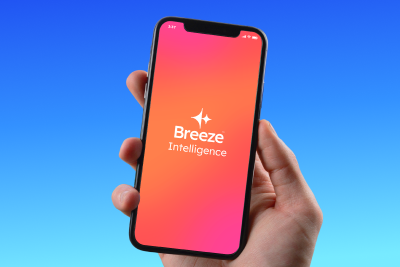Brand Refresh vs. Rebranding: Which Is Right for Your Business?
Your brand is more than just a logo or tagline—it’s the identity of your business. However, as markets evolve and customer preferences shift, your brand may need to change as well. This raises an important question for business owners: should you opt for a brand refresh or a complete rebranding? Understanding the differences between the two can help you make the right choice for your business.
Defining Brand Refresh vs. Rebranding
A brand refresh involves updating existing elements of your brand to keep it current. Think of it as giving your brand a facelift by modernizing your logo, color palette, or tone of voice without changing the core identity. It’s a subtle way to evolve your brand while maintaining recognition.
On the other hand, rebranding is a comprehensive overhaul. This involves creating a new brand identity from the ground up, sometimes including changes to your company’s name, mission, vision, and values. This strategic approach is ideal for businesses experiencing a significant shift in direction or aiming to redefine their image, offering an opportunity to revitalize the company’s identity, address past challenges, and align with new goals, ultimately creating a fresh and positive perception in the marketplace.
Pros and Cons of a Brand Refresh
Pros:
- Cost-effective: A refresh is less expensive and quicker to implement than a full rebrand, making it a budget-friendly option for updating your brand. It allows you to make meaningful improvements without the high costs and extensive timeline associated with a complete overhaul.
- Preserves brand equity: A refresh allows you to maintain and build upon the existing recognition and loyalty you’ve established while subtly evolving the brand. This approach helps retain customer trust and engagement, reducing the risk of alienating your current audience compared to a complete rebrand.
- Easier to manage: You can make incremental updates without disrupting your entire brand, ensuring a smoother transition. This gradual approach helps you adapt to changes while maintaining consistency and stability in your brand’s presence.
Cons:
- Limited impact: A refresh might just be a band-aid if your brand is significantly outdated or misaligned with your target audience. If you’re facing deeper issues, investing in a full rebrand could offer a more substantial solution and a chance to truly realign with your market.
- Potential confusion: Subtle changes might confuse customers who are used to the previous brand identity. This confusion can impact their perception of your brand and how they interact with it.
Examples of a Brand Refresh
1. Instagram: In 2022, Instagram revamped its visual identity to stay relevant and appealing to a younger audience. This refresh included a vibrant update to its gradient and the introduction of a new Instagram Sans font. The redesign aimed to modernize the app’s appearance and enhance its visibility, particularly through interactive and animated brand experiences. This update sought to reinvigorate the app’s image and emphasize new features like “Stories” and “Reels,” positioning Instagram as a dynamic and engaging platform in a competitive social media landscape.
2. Spotify: Spotify recently refreshed its color scheme to improve accessibility while maintaining its brand identity. Initially, they introduced a darker “UI green” to enhance the contrast with its white text and icons, but it fell short in both effectiveness and visual appeal. As a result, Spotify decided to revert to their original vibrant green for buttons and other elements, but with a new approach—using black for foreground text and icons. This change in their brands colors significantly boosts contrast, making key features more accessible and visually striking across all devices.
3. MasterCard: In 2016, MasterCard updated its logo by simplifying the overlapping circles and removing the text “MasterCard” from the icon. The new design focused on modernizing the brand’s visual identity while preserving its recognizable and iconic elements. The update streamlined the logo for better versatility across various applications.
Pros and Cons of a Rebrand
Pros:
- Complete transformation: Rebranding allows you to redefine your business identity, making a bold statement in the market. This overhaul offers a fresh start and the opportunity to align your brand with your evolving vision and goals.
- Attract new audiences: A rebrand can help you reach a new audience, or pivot into a different market. By updating your brand, you can capture the attention of potential customers and/or clients who may have previously overlooked your business.
- Clear differentiation: Rebranding can set you apart from competitors, especially if your current brand is getting lost in the noise or blending in with others. It enables you to establish a unique position in the market and stand out with a distinctive new identity.
Cons:
- Time-consuming and costly: A full rebrand requires extensive resources, from market research to implementation. The process involves considerable time and financial investment to ensure every aspect of your new identity is executed effectively. While it demands significant effort, the long-term benefits and the potential for a stronger market position make the investment often worthwhile.
- Risk of alienation: Changing your brand identity may confuse or alienate existing customers. A significant shift in your brand can disrupt established customer relationships and lead to uncertainty about your new direction.
- Loss of brand equity: Looking to start completely fresh? Be aware of the potential concern of losing the goodwill and recognition you’ve already built. A rebrand could erode the value of the brand equity you’ve accumulated over time, making it necessary to invest effort in rebuilding trust and familiarity with your audience.
Examples of a Rebrand

1. Airbnb: In 2014, Airbnb undertook a comprehensive rebrand to reflect its evolution from a simple room-sharing service into a global hospitality leader. The rebrand included a new logo, “Bélo,” which symbolized the concept of belonging. This shift marked a departure from their previous focus on budget accommodations and simple lodging. The updated brand messaging emphasized community and inclusivity, showcasing their expanded offerings such as Airbnb Experiences—unique activities like cooking classes and guided tours—and Airbnb Luxe, which features high-end luxury accommodations. This new direction aligned with their vision of fostering a sense of belonging and connection for both travelers and hosts.
2. Starbucks: Starbucks has undergone several brand refreshes over the years, most notably in 2011 when they simplified their logo. By removing the words “Starbucks” and “coffee,” they simplified and streamlined their iconic siren logo, which enabled them to expand into new products like their refreshers, teas, and iced energy drinks—without being confined to just coffee.
3. Old Spice: A brand known for being old-fashioned and masculine, underwent a major rebrand in 2010. The brand shifted its focus to younger men with humorous, over-the-top marketing campaigns (like the popular “Smell Like a Man, Man” commercials). This rebrand not only transformed their messaging but completely changed the brand’s perception in the market, appealing to a new, younger audience.
Factors to Consider When Deciding Between a Brand Refresh or a Rebrand
- Market Position: Are you struggling to stand out in a crowded market? If so, a rebrand may help you differentiate yourself. On the other hand, if your business is well-established, a refresh might be all you need to stay relevant.
- Customer Perception: If your brand has developed a negative image, a full rebrand could help repair that damage. However, if you’re just looking to modernize your image without drastic changes, a refresh may suffice.
- Business Goals: Are you entering a new market, launching a new product, or shifting your core business model? If so, a rebrand may align better with your long-term goals.
- Budget and Resources: Consider the time, money, and resources you have available. A brand refresh can be done quickly and affordably, while a full rebrand requires a larger investment.
Deciding between a brand refresh and a rebrand depends on your specific business goals, market position, and the resources available. If you want to maintain your brand equity while making small updates, a refresh might be the best choice. However, if your business is shifting direction or struggling with negative perceptions, a rebrand could offer a fresh start. Either way, ensuring your brand stays aligned with your company’s values and audience is essential to long-term success.
At Prismo Marketing, our comprehensive suite of services covers everything for a standout digital brand. From crafting visually stunning and user-friendly websites to boosting online visibility with results-driven SEO, we ensure discoverability and engagement. Our experts collaborate to create a memorable and cohesive brand image, incorporating creative graphic design that makes a visual impact, from logos to marketing collateral. Additionally, streamline your business processes with seamless HubSpot CRM integration. We‘re here to turn your digital aspirations into a reality. Ready to elevate your online presence? Contact us today, and let‘s get started on propelling your brand to new heights.
Featured Blogs


WRITTEN BY
Nikki Moser
Nikki is Prismo Marketing's Graphic Designer who combines problem-solving and creative thinking that goes beyond traditional design. From building strategic visuals to enhancing brand communication across platforms, Nikki shares her latest insights on design trends and the evolving role of creativity in digital marketing.


